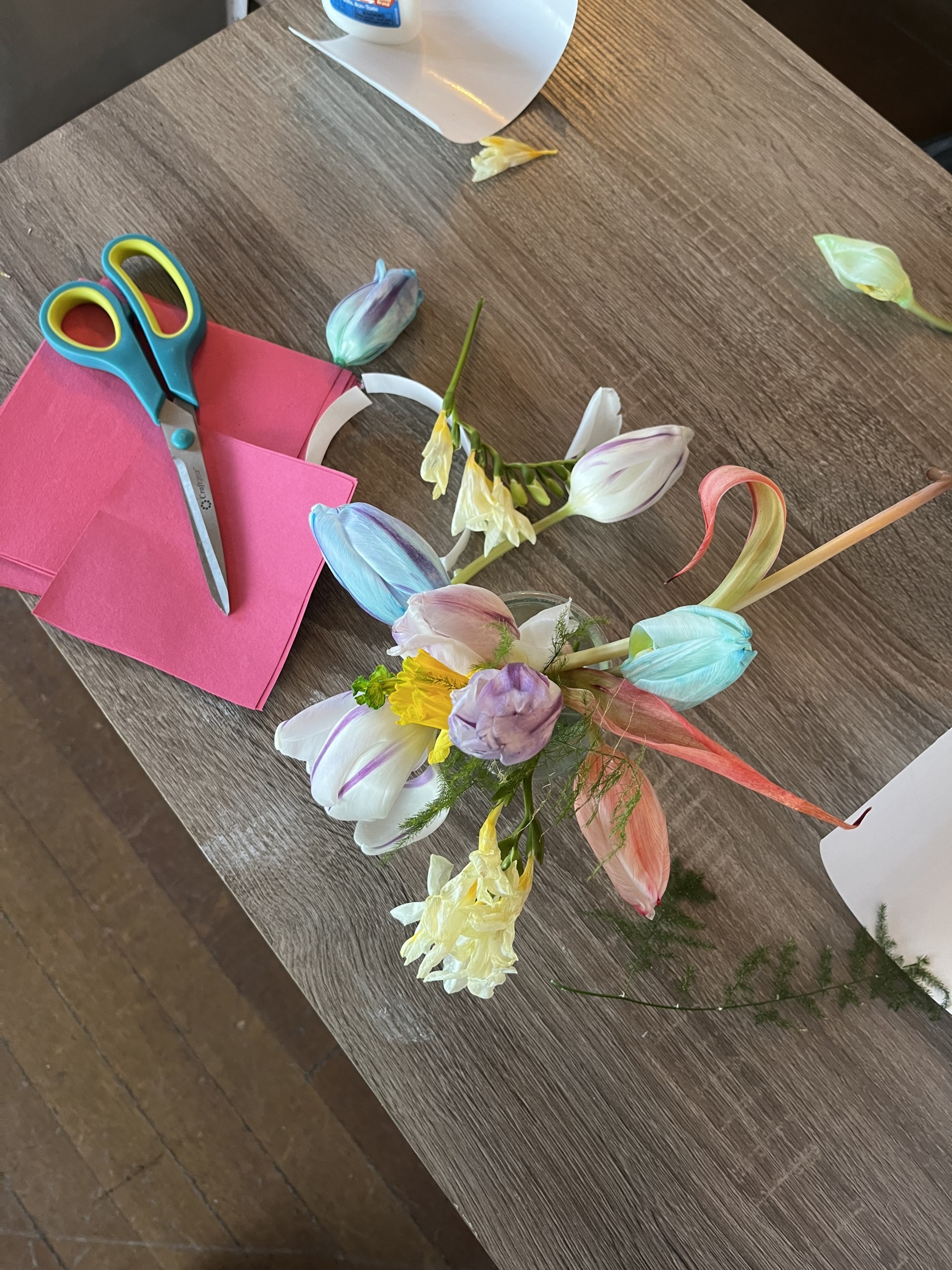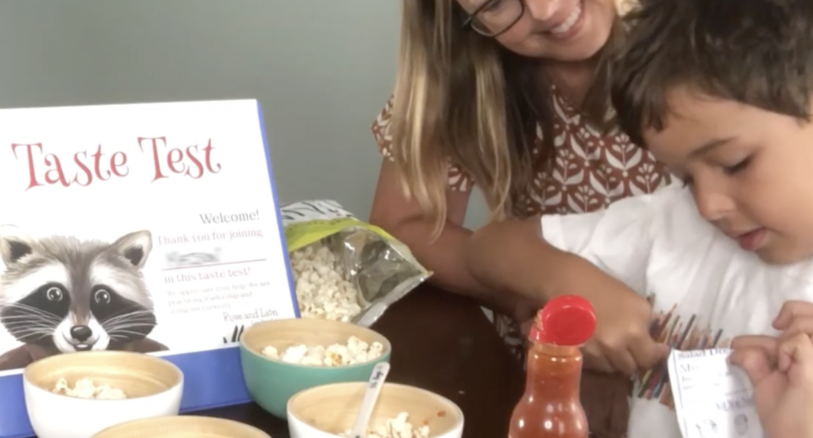Spring is springing! Lawns are covered with small flowers and fields are full of crocus, dandelions, tulips and more. These little flowers are PERFECT for spring activities such as dye-ing flowers in different colors, making sun-catchers and creating bookmarks.
We did two of these activities with a LEADERSHIP twist in our latest early leadership program – read on to learn how you can mix in timely lessons to bring out your child’s – or grandchild’s – leadership skills, too!
Activity 1: WALK the WALK – Gathering nature items
Leadership focus: noticing / paying attention, being considerate, using curiosity
What you’ll need: Nothing, unless you want to take a small scissors/clippers and bag with you on a walk.
First, head outside! Take a short walk to the neighborhood park, in your own garden or a local forest. Look for tiny flowers in the grass. These mini flowers are great for drying and pressing to make sun-catchers or bookmarks. Clip the top of a fern or gather a few leaves. If you’re in your own garden, pick tulips or hyacinth. Or, stop by your local grocery story or flower shop and buy a bouquet of flowers and some herbs like parsley, dill or mint.
If you pick flowers or grass from a local park, please be sure you have permission. Also, be mindful of how many flowers there are. Only take a small amount (eg, 1-2).
Look for white flowers, especially. These are the best for activity #2.
Leadership spotlight: If you notice the kids being considerate of their surroundings, spotting items to gather or pointing out things they find interesting, be sure to point it out to them. “I’m proud of you – you’re being kind.” or “I’m impressed at how you’re noticing so many textures or colors. That’s an important skill that can help you later in life, too.”
Playful environmental spotlight:
- See how many different types of flowers your can find and take a moment to point out the abundance we are surrounded by in nature.
- Point out how bees and bugs might be using tall grasses or leaves on the ground as spring-time homes. Which bugs can you find?
- Go on a hunt to see which trees are budding and which are not – how many types of buds can you find on the trees?
- Another fun way to explore is to see if you can find things with a certain letter. For example, spell “TOM” – tulips for T, orange leaf for O and mud for M.
Activity 2: INFLUENCE the FUTURE – Soaking flowers in colored water
Leadership focus: setting a vision, critical thinking, influencing, empathy and compassion
What you’ll need: Jar partially filled with water, food coloring drops and items you gathered in activity #1 (or several white or light-colored flowers). You might also want to do this project over a mat or sink to minimize the effects of any food coloring spills.
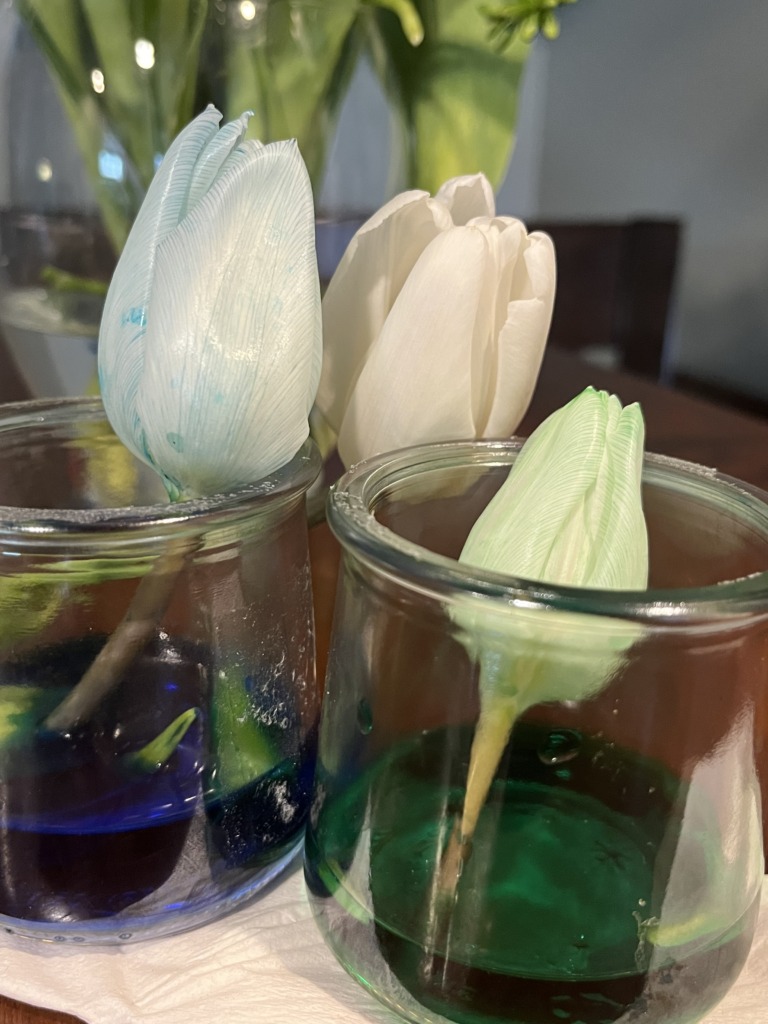
What happens when you place a flower in a jar of colored water? Start by predicting the future. What do you think?
Next, add 7-10 drops of food coloring to a small jar partly filled with 6-8 ounces of water (about a ratio of 1 drop food coloring per ounce). Note: We like using small glass yogurt pots for this and cutting the flower stems pretty short. Also, it’s fun to have 3-4 jars with different colored water to see what happens when you use different colors.
Place 1 flower in each jar of colored water.
Wait several hours and check back. What happened? (Note: the shorter the flower stem, the faster the change).
Leadership spotlight: Guessing what might happen to the flower takes critical thinking skills! It doesn’t matter if you’re right or wrong, it’s the process of thinking it through that is important. We used this activity in our leadership class to introduce the idea that we’re effected by our environment – the people we’re surrounded by, what we’re watching on TV, etc. Yet we are also an influence on others. You can remind your child or grandchild of a time when you saw them positively influencing someone (perhaps they are influencing you right now!)
STEM spotlight: Plants “drink” water through their stem and root system. When a stem is soaking in colored water, the dye moves up the plant’s capillary system along with the water and changes the color of the white petals (and sometimes the leaves, too). The water is flowing upward, against gravity, which is called “capillarity,” and this a cool way to notice this special flower power. [Food for thought – What special influential power does your kid have?]
OPTIONAL: PREPARE for Activity 3 + 4: Press the flowers to dry them
If you want to create long-lasting sun-catchers or better bookmarks, then it helps to dry them.
Some flowers will change color as you dry them – this is normal!
*Be sure to include some of the petals from the flowers you dyed in activity #2!*
Option 1: Press the flowers in a book. *This takes a couple of weeks to do, so plan ahead*
Imagine you’re creating a “sandwich” of flowers between paper towels. Start with a base of paper towels. Place your flowers, leaves or grasses on the paper towels. Then add another layer of paper towels on top. Carefully place this in between the pages of a heavy book. Add another heavy book on top. Wait 2-3 weeks for the flowers to dry.
This requires waiting, but it’s fun to open up the book and “find” the flowers again.
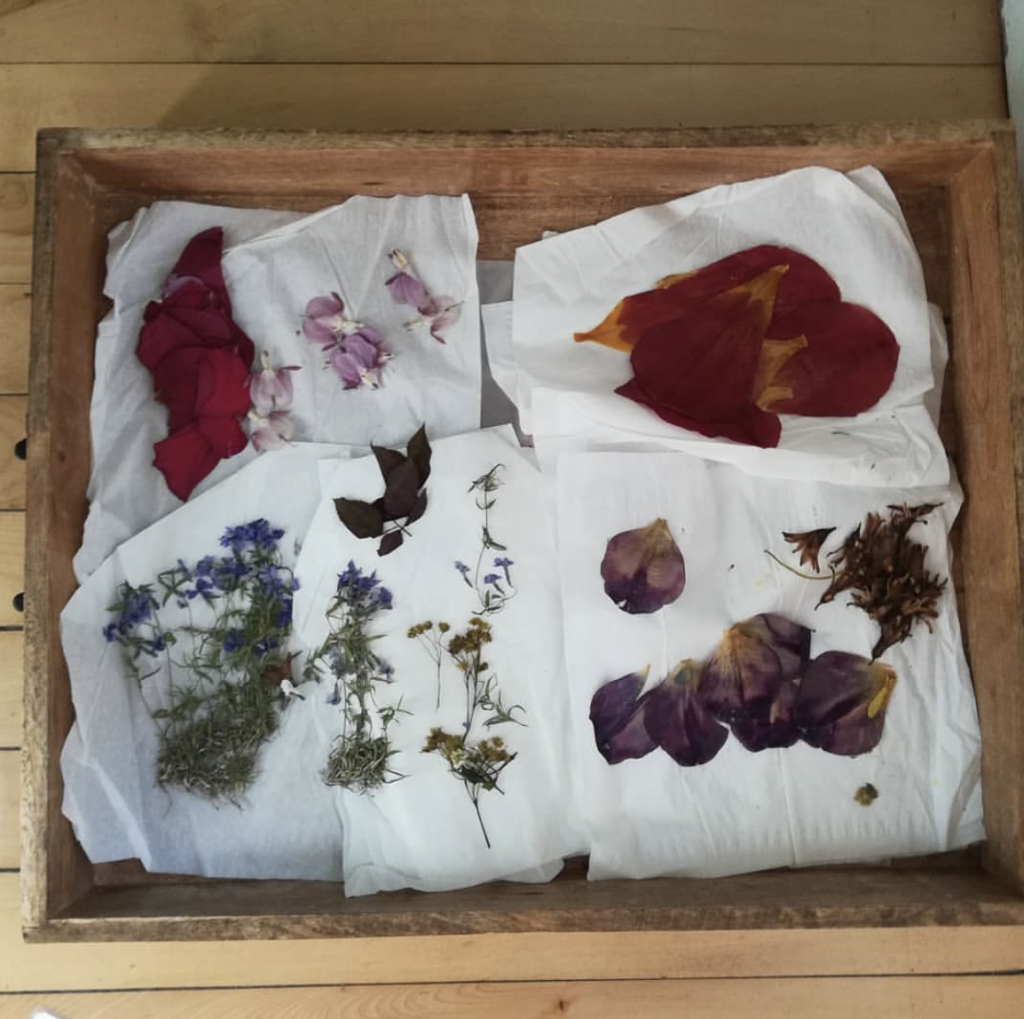
Option 2: Oven dry – 2 hours
Place flowers on drying racks and place the rack on top of a baking tray. Pop them into a low heat (175-200 degrees Farenheit) oven for 1.5-2 hours. Check them every 30 minutes to make sure they are not burning. Check this blog for more instructions.
Activity 3: CATCH the LIGHT – Making sun-catchers
Leadership focus: influencing, creativity, self-empowerment
What you’ll need: Clear contact paper or laminating paper, flower petals and/or leaves (preferably dried / pressed), construction paper or an embroidery hoop, gel cling or Scotch removable hanger, scissors
Adaptation: Make a collage instead – just glue flower petals and leaves to construction paper. The only thing you’ll miss is the ability to let the light shine through as a sun-catcher.
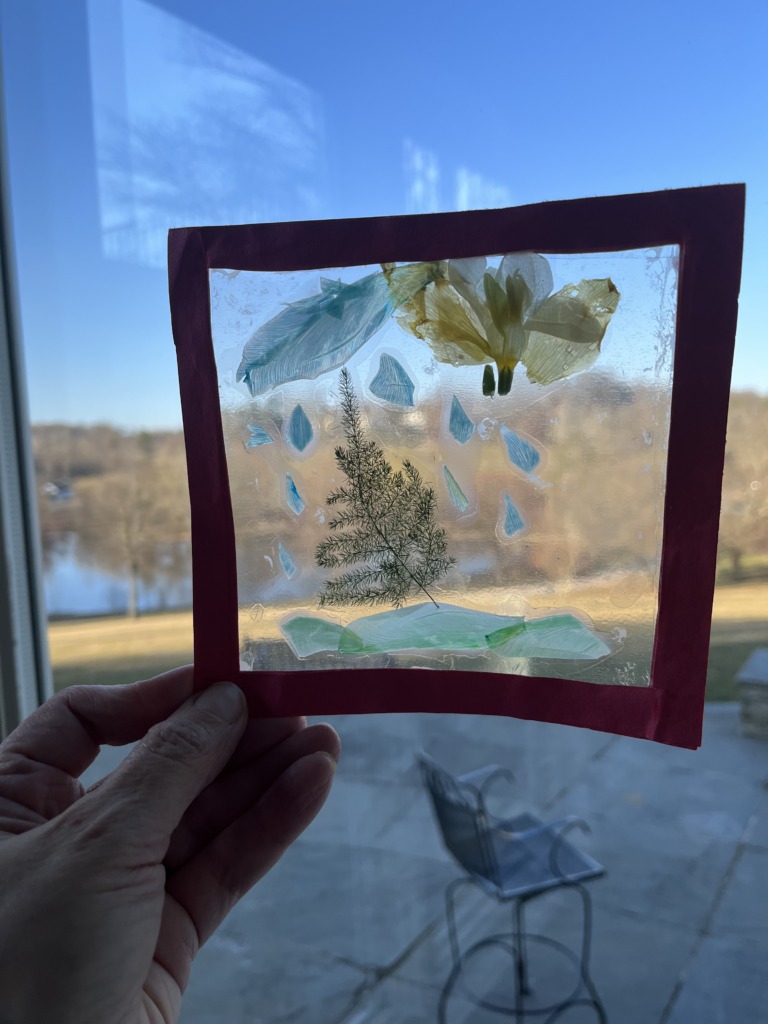
Note: If you use fresh flowers, the moisture will cause this craft to deteriorate in a few weeks. But it still works!
Imagine yourself as an influencer in this world! Choose a flower to represent YOU – for example, use petals from the dyed flowers you made in activity 2 to represent yourself. This project is about letting the child choose, decide and create – which is self-empowering! (So, don’t fix, improve or change what they are doing!).
Cut two 6×6 inch squares of contact paper. Remove the back from one layer. (If you’re using laminating paper, just open it up and begin with the next step.)
Arrange flowers, leaves or grasses into a scene that reflects how you influence your environment. Leave a little room around the edges.
In our children’s early leadership program, someone cut the blue tulips into raindrops and sprinkled their influence. Another took an entire petal and said he was a superhero flying around the earth to help.
-Erika Hovland Bahij, Founder, Rose and Redwood and creator of Rose and Lion Leadership
Remove the back from the second piece of contact paper and place it on top of your artwork to seal it.
Next, you can create a frame by cutting two 6.5×6.5 inch squares of construction paper. Cut out a 5.75×5.75 inner square.
Glue the frame around your artwork.
Hang it in a window using a suction cup and string, pressing it against a removable glue spot (like from 3M) or a gel cling from another window cling project (like those seasonal clings you can get at CVS, Target or the Dollar Store).
Again, you can do this project by gluing things onto construction paper, too. But it’s fun to see it sparking in the window!
Leadership spotlight: Parent or grandparent – Focus on the process, not the result. Envisioning yourself as being an influence is a great way for kids to start seeing themselves as leaders. Most kids want to express their personal power – and this is a great way for you to learn how they think and feel about being leaders. When kids express themselves through art, they often reveal their inner thought life or their innate strengths (which isn’t necessarily the actual art – but what the art represents to them). Pay close attention to see what you can reinforce about their leadership potential, creativity and / or decision-making.
ARTS spotlight: This activity is about using creativity and creative projects can get messy. If glue is involved, there might be a lot of it used. The frame might not be cut perfectly. Someone might use tons of flowers that create a lumpy, bumpy craft. Another might choose only a couple of petals. It’s all perfect – don’t fix or re-work what the child creates.
Activity 4: CONTINUE the STORY – Making bookmarks
Leadership focus: sharing, creativity, self-empowerment
What you’ll need: Clear contact paper or laminating paper, flower petals and/or leaves (preferably dried / pressed), construction paper or pre-made bookmarks, glue, string, hole punch
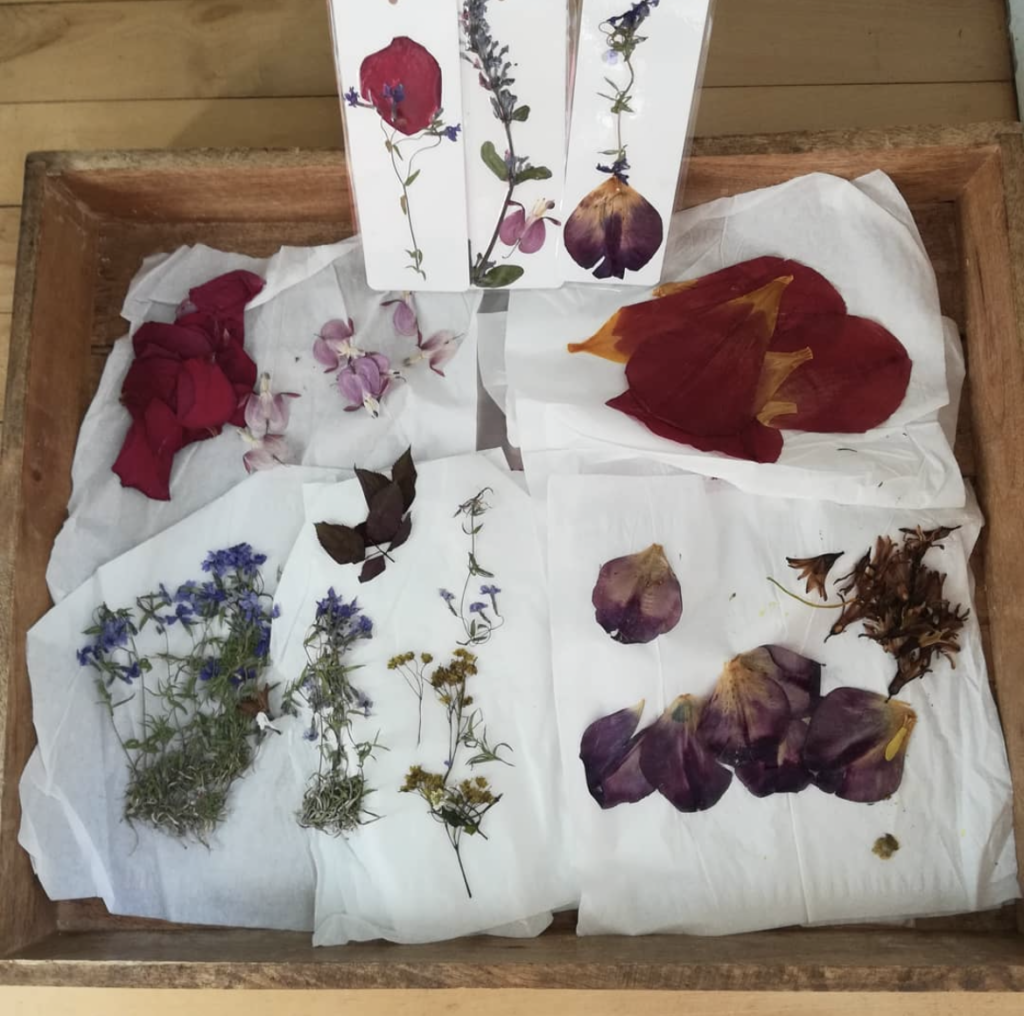
Ready to use the rest of your dried flowers? Create bookmarks – and give some away as gifts!
Cut bookmark shapes out of construction paper. A standard size is 2″ x 6″ inches.
Glue flowers to the bookmark. You can use spray glue or a glue stick if you want to be more precise. (Be careful with spray glue – you might want to wear goggles to make sure it doesn’t get into anyone’s eyes). You could also draw on the construction paper or glue cut out pictures from magazines on to the paper, too!)
Place the finished bookmark in laminating paper or between two precut slices of contact paper (cut the contact paper a bit larger (eg, 1/8″) than the construction paper so it can adhere to itself on the edges.)
Use a small hole punch to create a small hole at the top (or carefully use a knife or scissors to make a hole).
Then feed a string through the hole. Cut about 8 inches of string. Fold the string in half. Feed the folded end through the hole. Then take the two ends and loop them through the folded string. Pull up. Tie the top of the string into a knot.
Voila! Now, grab a book and read a story!
These also make great gifts.
Leadership spotlight: Parent or grandparent – Focus on the process, not the result. When kids express themselves through art, they often reveal their inner thought life or their innate strengths (which isn’t necessarily the actual art – but what the art represents to them). Pay close attention to see what you can reinforce about their leadership potential, creativity and / or decision-making.
ARTS spotlight: This activity is about using creativity and creative projects can get messy. If glue is involved, there might be a lot of it used. Someone might use tons of flowers that create a lumpy, bumpy craft. Another might choose only a couple of petals. It’s all perfect – don’t fix or re-work what the child creates.
Looking for more activities to do with kids? Check out this blog post.

